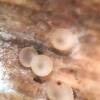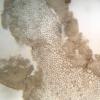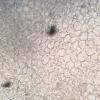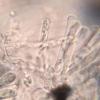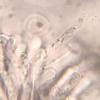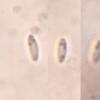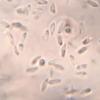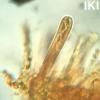
20-12-2025 15:47
Mirek GrycHi.These grew on pine wood that was heavily covere

18-12-2025 21:17
Pol DebaenstThe identification took me to Byssonectria deformi

15-12-2025 07:09
 Danny Newman
Danny Newman
indet. Rutstroemiaceae sp. on unk. fallen leavesMc

19-12-2025 10:10
Patrice TANCHAUDBonjour, récolte réalisée en milieu dunaire, a

18-12-2025 17:23
 Bruno Coué
Bruno Coué
Bonjour,je serais heureux d'avoir votre avis sur c

18-12-2025 18:07
Margot en Geert VullingsThese plumes were found on rotten wood.They strong

17-12-2025 18:35
 Michel Hairaud
Michel Hairaud
Bonjour à tous/Hi to everyone I am passing along

15-12-2025 15:48
 Danny Newman
Danny Newman
Melanospora cf. lagenaria on old, rotting, fallen
Tiny white cups
Ethan Crenson,
07-06-2019 21:03
I found these tiny cups last weekend and I'd be grateful for help identifying them. They were growing on a decorticated hardwood branch in a cemetery. The largest of them reaches about 1mm in diameter. They are a translucent white with a very faint fringe at the margin. Some are slightly stipitate. Asci measure 24-27 x 3-3.5µm, IKI-. Spores are sub-fusiform, 4-4.5 x 1.5µm. Paraphyses (at least what I assume are paraphyses) have enlarged apex. Excipulum textura angularis (globulosa-angularis?)
Thank you in advance,
Ethan
Martin Bemmann,
07-06-2019 21:11

Re : Tiny white cups
Hi Ethan,
this is one for Zotto. A Hyalorbilia... perhaps fusispora?
Regards
Martin
Ethan Crenson,
07-06-2019 22:18
Hans-Otto Baral,
08-06-2019 16:24

Re : Tiny white cups
I assume the yellow-orange are the same. And I must say, although the spores are fusoidm this is an Orbilia, because
- dead asci have a truncate apex
- excipular cells are isodiametrical
- ascus base is stalked
- paraphyses are capitate and lack exudate
- Spores are not symmetrically guttulate. The droplets are variable here and in this difficult species there is high variation in general.
I thin it is Orbilia eucalypti, though the spore width is too narrow. With a scale I could check, maybe the spores exceed 4.5 µm?
- dead asci have a truncate apex
- excipular cells are isodiametrical
- ascus base is stalked
- paraphyses are capitate and lack exudate
- Spores are not symmetrically guttulate. The droplets are variable here and in this difficult species there is high variation in general.
I thin it is Orbilia eucalypti, though the spore width is too narrow. With a scale I could check, maybe the spores exceed 4.5 µm?
Ethan Crenson,
08-06-2019 18:16
Re : Tiny white cups
Thank you Zotto! Orbilia eucalypti... the name suggests Eucalyptus as a substrate. Does it grow on other substrates? I will make another attempt to measure and photograph the spores later today. Unfortunately, I don't have the equipment to make photographs with the scale in view.
Martin Bemmann,
08-06-2019 18:29

Re : Tiny white cups
Hi Ethan, you don't need an eypiece with a graticule. You only need a micrometer slide once to calibrate the photos of your camera while using your different lenses from 2.5 (?) to 100 (?). Thereafter you can use software as ImageJ to apply a scale to your images.
Regards
Martin
Hans-Otto Baral,
08-06-2019 20:55

Re : Tiny white cups
Various fungi have names that are historically born, also this one. It is one of the commonest Orbilias and grows on everything woody. Earlier the names O. coccinella and O. alnea were in use, the former turned out to be something very different from the type, the latter is now a synonym of the oldest name O. eucalypti.
Ethan Crenson,
10-06-2019 21:58
Re : Tiny white cups
I used imageJ as Martin suggested. Here are the measurements:
4.611 x 2.138
4.363 x 1.272
4.184 x 1.216
4.143 x 1.453
4.032 x 1.409
3.521 x 0.940
3.503 x 1.278
3.376 x 1.216
3.339 x 1.289
3.129 x 0.947
4.363 x 1.272
4.184 x 1.216
4.143 x 1.453
4.032 x 1.409
3.521 x 0.940
3.503 x 1.278
3.376 x 1.216
3.339 x 1.289
3.129 x 0.947
Hans-Otto Baral,
10-06-2019 22:07

Re : Tiny white cups
a width of 1-2 µm is a bit wide range. I believe more in 1.5-2.
More I cannot say, the group is very difficult and badly studied in thel iterature.
More I cannot say, the group is very difficult and badly studied in thel iterature.


